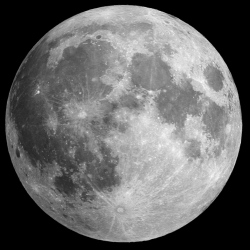
NASA turned away from the Moon at the very place where America’s Apollo journeys began. In April 2010, President Obama visited Kennedy Space Center in Florida to deliver his single space policy speech. As Buzz Aldrin looked on, Obama said of the Moon, “I just have to say pretty bluntly here, we’ve been there before."
With this one line, Obama had transformed the Moon into a taboo subject within the halls of the NASA administration in Washington DC. Instead of the Moon, Obama said, NASA would send astronauts to an asteroid and then, one day, Mars.
Why the policy shift? NASA had just sponsored an influential report by Norman Augustine and others that found its big-rocket Moon program was unaffordable. Additionally, Constellation and its Moon-first ambitions were launched by a Republican president, George W. Bush.
Since the 2010 speech, NASA has pushed to meet the president’s new goals. Engineers designed plans to visit an asteroid, but that initiative lacked the funds to fly astronauts deep into space. Then engineers planned to grapple a house-sized asteroid and drag it back to the vicinity of the Moon for astronauts to explore it.
But even that proved too challenging, so the plan now is to grab a small boulder from an asteroid and bring that back to the Moon. Technically, this meets the president’s goal of “visiting” an asteroid.
As for Mars, yes, the agency says it is going there in the 2030s. This is its “Journey to Mars.” But the agency has yet to outline a clear roadmap for how to do this, nor has it said how much Mars will cost. Critics have said an agency with no plan is going nowhere, and others contend it hasn’t presented Congress with a budget because it doesn’t want to give legislators “sticker shock.”
It is perhaps best that NASA’s Constellation program ended in 2010. Characterized by then-NASA Administrator Mike Griffin as “Apollo on steroids,” Constellation was to use huge, expensive rockets and landers and traditional cost-plus contracting methods. Independent estimates suggested using this approach would cost the United States a staggering $150 billion to return to the Moon by the 2020s.
If we really want to go back, there are essentially three pathways. One is the traditional NASA way, an all-government approach with huge contractors like Boeing and Lockheed Martin devouring lucrative cost-plus contracts. This has proven too expensive during past efforts to leave low-Earth orbit, first with the Space Exploration Initiative in the early 1990s and again during Constellation.
A second way is an all-commercial approach, led by private investors who might sell the water to NASA for rocket fuel or dredge up silicates in the lunar regolith and fabricate solar cells for use on the Moon or to beam power back to Earth. No company has been able to build a strong business case. Such proposals come with high upfront costs and distant profits.
A final pathway to the lunar surface involves some manner of public-private partnership, in which governments buy low-cost services from private companies. While NASA has disdained the Moon since 2010, its policies may change. Europe, too, is interested in an international partnership to develop the Moon as a follow-on project to the International Space Station.
It’s impossible to know how much water ice might be on the Moon. The data leads to suspect the surface of some craters consists of a fluffy mix of water ice and other chemicals with low boiling points known as volatiles. This porous material might extend down a few meters below the surface. Below that, there may be a layer rich in water ice, potentially as much as 80 percent water.
Perhaps water on the Moon finally opens an affordable pathway to Mars. Certainly a lot of current astronauts feel that way. Clayton Anderson, a veteran of two spaceflights, attended an astronaut-only meeting before leaving NASA in January 2013 when Lori Garver, then NASA’s deputy administrator, had come to Johnson Space Center to meet with the astronauts.
During the meeting, Garver polled the nearly 50 astronauts about their preferred destination. Who wanted to go to an asteroid, she asked. No hands. Mars? Three hands. The Moon? All the rest.
